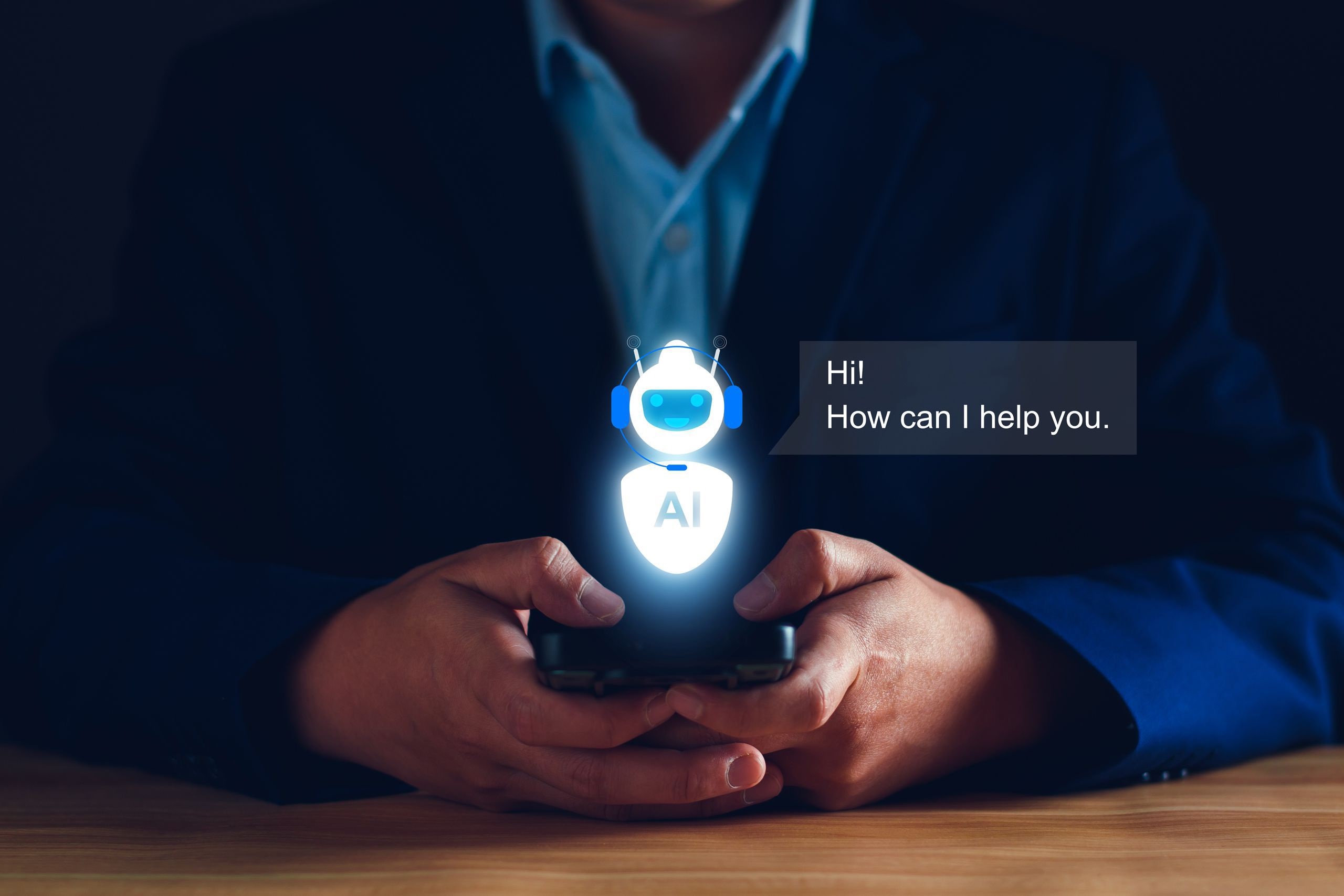When it comes to Customer Support, we are used to interacting with human agents who help solve our queries. However, to keep up with the technological evolution and optimize and accelerate those same services, more and more companies have a virtual agent on their digital platforms.
Continue reading this article to learn what they are, their characteristics and the applications they could have in your organization.
What is a virtual agent?
A virtual agent (digital agent or chatbot) is a computer system with Artificial Intelligence (AI) programmed to simulate human conversations with its users via chat or voice. It’s widely used in customer service.
Because it uses NLP (Natural Language Processing) and Machine Learning, it can answer various questions instantly, 24 hours a day, 7 days a week.
In addition to responding to users, the virtual agent can be programmed to perform small tasks and facilitate transactions by automating repetitive processes. And when integrated with other systems, it could, for instance, make documents available automatically.
Therefore, it's an excellent option for companies that want to strengthen their digital transformation and improve customer satisfaction while reducing operational costs and using team efforts for more complex and creative tasks.
What are the characteristics of a virtual agent?
Today, in almost every company, there is already some form of automated support in place to help customers solve their challenges autonomously. But how do we know if we are talking to an actual virtual agent instead of a more basic tool?
Well, virtual agents' characteristics make them more functional and efficient. Let's look at some of them below:
1. Personality and Appearance
You can customize the appearance of a virtual agent according to your brand colors and even give it a face, unlike simpler tools that use the same template for every company.
Moreover, depending on your target audience, you can give it a more serious or laid-back personality.
These factors help create greater proximity with your consumers who, despite talking to a robot, gain some empathy and relationship with it.
2. NLP
Natural Language Processing technology allows conversational robots to understand and analyze human language, i.e., user questions and requests.
If a virtual agent does not have NLP algorithms implemented in its core, it must have some ground rules allowing it to communicate with users. Even so, it is still much more robotic and less flexible than if it had NLP implemented and misses the users' intent when they ask for something in a different way.
3. Machine Learning
Machine Learning is the technology that allows chatbots to learn from the different interactions they have. So, the more extensive the knowledge base with diverse questions and requests, the easier for these systems to respond to what the customer wants.
As time passes and with more interactions, the more the virtual agent becomes efficient. So even if it can't answer today, it will certainly do it tomorrow.
4. Context Awareness
In line with the above, these agents can understand more complex commands, understand the context and respond accordingly.
For example, if you say, "Is there any way to talk to you in person in city X?" the chatbot will understand that the customer is looking for a store or branch of your company in city X and will respond with the requested information.
5. Multichannel Support
Virtual agents are very flexible because you can integrate them into any platform you want, whether a website or mobile application like WhatsApp or Facebook Messenger.
In this way, you can reduce the contact flow by spreading it across different digital channels and allowing customers to choose how they prefer to contact your company.
6. Integration with other systems
As mentioned above, virtual agents are very flexible, and it is possible to integrate them with various systems that companies use daily, namely CRMs such as Salesforce, among others.
This allows you to customize interactions further, providing complete information to users while collecting data to improve your services even more.
7. Security and Privacy
Regarding security and privacy for users and companies, these conversational tools are developed following very strict data protection rules, thus ensuring compliance with established regulations.
What are the applications?
Most chatbots or virtual agents are used for customer support. But they can play many other roles besides helping customers solve their issues.
One area that benefits from implementing chatbots is, for example, Sales and Marketing.
These intelligent systems are a great tool for interacting with potential customers, answering their questions, suggesting the following steps, and providing personalized recommendations based on their interests. In this way, it generates business leads, qualifies potential customers, and promotes products and services in a fully automated way.
Virtual agents can also be used as tools for education and training. For example, they can provide educational content such as video tutorials and manuals and even help test acquired skills.
In addition, they can be sources of entertainment when interacting with users and capturing their attention. Depending on how you customize them, they can tell jokes, play games, etc.
In short, virtual agents can be used in multiple contexts and various industries, increasing customer satisfaction.
What are the advantages of having a virtual agent with Artificial Intelligence?
Companies that search for alternatives to innovate their Customer Support want to keep up with the trends and the digital age. In addition, they are the ones who are always concerned with providing the best possible service to their customers.
Virtual agents can offer you much more than digital transformation. They can increase customer satisfaction, which any company with a customer-centric strategy wants.
These agents with Conversational AI allow you to:
- Be available 24/7
Your customers may need to contact you anytime, and sometimes working hours are not enough or the best time for them.
Remember that your customers also work, and the time they have left to call or stop by to resolve issues may not be compatible with your work schedule.
So be prepared for those situations at any time, every day of the year.
Of course, this does not exclude having your human assistants available. In fact, using the Live Chat feature, they should answer the questions that the chatbot could not. In any case, for many purposes, the chatbot does not leave your customers without support.
- Deliver an immediate response.
Waiting times to get an answer are one of the things that customers complain about the most. In our world, nobody has the patience to wait anymore.
New generations are used to getting immediate answers, and if not through your customer service, then through other means, which may have less reliable information.
With a chatbot, there are no more waiting times because they can communicate with countless people simultaneously and immediately. They just need to have the necessary information in their knowledge base.
- Personalize interactions based on the user
As your virtual agent talks to users, he will collect information such as their name, age, what products they have, or services they use.
For example, referencing your customer's name during the conversation will make them feel unique and not that they are “just another customer."
The same applies when you recommend other products or campaigns to them that are related to their profile and are not just suggestions sent in bulk.
A personalized service according to your customer's profile and data is halfway to making your customer more engaged with your chatbot.
- Be consistent in your answers.
Just as it has happened to us (we believe it has happened to you, too), there are times when we talk to a brand representative who gives us certain information. However, when we talk to another, they tell us something completely different.
People may have different understandings of what the customer wants and propose different solutions consequently. However, with a virtual agent, you can maintain consistency in the answers, regardless of how the user has asked.
Even if the virtual agent is unsure about the best answer, it allows the user to choose the topic they need.
- Gather Metrics
In addition to the information, we discussed earlier, such as name, age, and others, chatbots are also great tools for collecting other data. Namely, topics customers have more difficulties with, services/products they use the most, products they search for more often, and what kind of actions they do in the chatbot (memberships, simulations, documentation, requests).
Collecting this data allows you to improve the virtual agent's information flows and enhance your marketing campaigns.
- Scale the solution
This type of agent is always associated with an AI platform where you can parameterize the different characteristics of your chatbot, from appearance to increased efficiency and artificial intelligence.
You can also scale your solution on this platform by integrating it into different contact channels beyond your website, such as WhatsApp or Facebook Messenger.
You can also include your human assistants by enabling chat-based customer service. By chatting, they can talk to more than one customer at a time, increasing the service's speed and efficiency.
An agent made for you
At Visor.ai, we care about providing a solution that meets all your requirements, be it customization, use cases, security, etc., and we are always attentive to your needs.
We update and release new features regularly so that whoever works with our platform or interacts with our virtual agents always has the best user experience.
Our focus is to help you automate and optimize your Customer Service and have customers even more satisfied with your company.
What are you waiting for to enter the future of smart interactions? Contact us!










